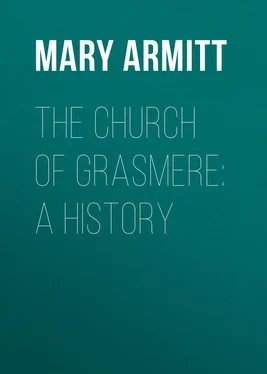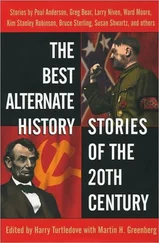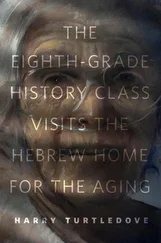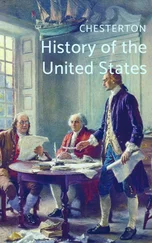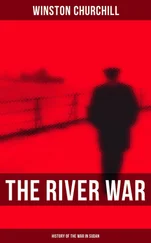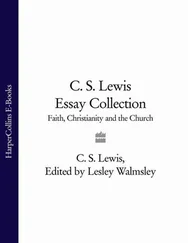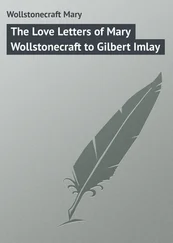Mary Armitt - The Church of Grasmere - A History
Здесь есть возможность читать онлайн «Mary Armitt - The Church of Grasmere - A History» — ознакомительный отрывок электронной книги совершенно бесплатно, а после прочтения отрывка купить полную версию. В некоторых случаях можно слушать аудио, скачать через торрент в формате fb2 и присутствует краткое содержание. ISBN: , Жанр: foreign_antique, foreign_prose, на английском языке. Описание произведения, (предисловие) а так же отзывы посетителей доступны на портале библиотеки ЛибКат.
- Название:The Church of Grasmere: A History
- Автор:
- Жанр:
- Год:неизвестен
- ISBN:http://www.gutenberg.org/ebooks/43002
- Рейтинг книги:4 / 5. Голосов: 1
-
Избранное:Добавить в избранное
- Отзывы:
-
Ваша оценка:
- 80
- 1
- 2
- 3
- 4
- 5
The Church of Grasmere: A History: краткое содержание, описание и аннотация
Предлагаем к чтению аннотацию, описание, краткое содержание или предисловие (зависит от того, что написал сам автор книги «The Church of Grasmere: A History»). Если вы не нашли необходимую информацию о книге — напишите в комментариях, мы постараемся отыскать её.
The Church of Grasmere: A History — читать онлайн ознакомительный отрывок
Ниже представлен текст книги, разбитый по страницам. Система сохранения места последней прочитанной страницы, позволяет с удобством читать онлайн бесплатно книгу «The Church of Grasmere: A History», без необходимости каждый раз заново искать на чём Вы остановились. Поставьте закладку, и сможете в любой момент перейти на страницу, на которой закончили чтение.
Интервал:
Закладка:
As regards Grasmere itself record is scant. The manorial courts were occasionally held in the Moot Hall of Kirkby Kendal, as in 1603, 47 47 Public Record Office Court Roll 207/111.
but in early times it would be impossible to summon the holders from so far; and it is stated in 1436 that two courts were yearly held in Grasmere. 48 48 Church inquisition post mortem, Henry VI., No. 36.
No other building than the church could have contained this official gathering. The judgment on the 1583 tithe dispute enjoined that the parishioners were to pay their tithe of lambs in money every Easter "in the parish church of Gresmier." The church or chapel was as a rule the schoolroom where the priest taught.
The churchyard, even more than the church itself, had its secular and popular uses, which came down from ancient time. The fairs, the markets, the sports and the wrestlings 49 49 See Coulton's Chaucer and his England , where miracle-plays and dances are added to the list.
which took place within its enclosing walls, and of which we obtain faint intimations, were but the survival of the festivals sanctioned by the early church, when the wake, or fair of the patron saint was kept. This again, with its bull-baiting, its rude sports and its temporary stalls, may be linked on to the earlier rites of heathen times, when beasts were brought to the Temple for sacrifice, and when the people built booths about it, in which to hold a three days' feast. The annual or biennial fair, and even the Sunday market, were quite usual in the churchyard, before the boroughs obtained a special privilege for them. And though an express statute in 1285 forbade the practice, neither this nor the later injunction of the Church were heeded. In 1300 the town of Cockermouth complained that its market was spoilt by the bartering carried on at Crosthwaite Church, where not only flesh and fish were sold at festivals (and this distinctly smacks of an ancient sacrificial practice); but that corn, linen, cloth and other commodities were conveyed thither every Sunday for barter. In 1380 the town of Appleby was suffering from a like cause. Merchants were carrying their goods to sell in the churchyards of the surrounding district on Sundays, to the detriment of the accredited market. 50 50 Calendar Patent Rolls, 4 Richard II., p. 1.
If this was done in other places of the district, it was certainly done at Grasmere, for the market town of Kendal was sixteen miles distant on a road often impassable. 51 51 Browne MSS.
It was not until the seventeenth century that markets were established in the neighbouring towns of Hawkshead and Ambleside, after Grasmere had in vain attempted to secure the privilege. 52 52 Rydal Hall MSS.
A good deal of informal business besides was conducted in the churchyard, such as sales proposed or private bargains struck. Of proclamations and sale notices made within the church or garth we have abundant evidence; and for these the clerk received generally a fee of 2d. No doubt the "citation" we hear of for tithe wool due to Squire John Fleming (1631) was made at the church. The prohibition against cutting wood in Bainrigg (1768) which the Rev. J. Wilson suggested should "be given at our church of sunday" and which was to deprive the holder of his winter fuel, has been preserved. 53 53 Rydal Hall MSS.
In recent times, according to Edward Wilson, the notices were given out by the clerk in the yard, outside the so-called men's or western door.
The officers of the townships transacted business at church; and the notices still hung in church porches are a survival of the custom. The overseers of the poor worked in fact in close connection with the wardens; and the latter were responsible for some county rates which are found entered in their accounts, such as (1708) "To the Jaylor at Appleby" and "Prisoner Money." The Overseers' books for Rydal and Loughrigg show that when they failed to board a pauper within their township, they paid to the clerk 2d. "for advertising her to let."
The constable (and there was one for each township) had a far older connection with the parish church. He caused meetings for his division to be proclaimed at the church. Among the miscellaneous duties which he still performed in late times was payment for the slaughter of harmful beasts and birds. The heads of these were hung, we are told, on the church gates as visible proof; and Stockdale, writing in 1872, 54 54 Annales Caermoelensis.
says that he has seen them so exposed both at Cartmel and Hawkshead. The same practice no doubt prevailed at Grasmere. The constable's books for Rydal and Loughrigg record 4d. as the price usually given for a raven's head, and 3s. 4d. for that of a fox. In 1786, 5s. 0d. was paid "for one old Fox and two young ones." Ravens were frequently entered, and as the payments went to William Parke, we must suppose them to have been taken on the precipice of Nab Scar. Five were paid for in 1787, and twelve in 1790. These would decorate the Rydal and Loughrigg gate. Two foxes were paid for in 1793.
THE EIGHTEEN
Not Twenty-four, but Eighteen represented the interests of the townships in the parish church. This was the case also at Crosthwaite in Cumberland, where this ancient body of "sworn" men were swept away by the Charity Commissioners at the time that they took over the schools. Of the Eighteen in Grasmere six represented – along with two wardens – each township. While the wardens, who were all landholders, took office for one year only, and in rotation, like all other officials of the village communities, such as constable, overseer, surveyor of roads, and frithman, the Eighteen appear to have been freely elected, and they kept office for an indefinite period.
The names of those who served the office at the Restoration are given in the important document concerning the fabric of the church printed later, and these names were but slowly altered. In the churchwardens' books of 1723 is written "Then chosen Edward Brockbank to be an Eighteen man for Little Langdale in the place of John Brockbank his father, deceased." Again in 1824 comes "Sides-Man Chosen by the Minister Churchwardens and Sides-men," followed by their names. A list of these was but infrequently written out, only an erasure marking a change, as when in 1708 John Green, serving for Grasmere "being Very Old and infirm, desired to be excused," and Thomas Green took his place.
The choice of a new member of the body lay apparently with the Eighteen themselves, the wardens, and the parson. This is still the case in Windermere, where (I am told) the choice of a new member of the Twenty-four is discussed in full vestry, the clergyman, however, finally nominating. 55 55 From Mr. George Browne, one of the Twenty-four.
Yet the Eighteen were acting representatives in church affairs of the folk of the townships. All contracts for the improvement and alteration of the church were made by them. They were responsible for the share of their township in its upkeep, and laid a rate on the landholders to cover the yearly expenses. It is almost certain that the appointment of a clerk and schoolmaster lay with them and the wardens, though the parson no doubt sat at the conclave. We have no means of knowing whether their powers extended further. 56 56 At Holme Cultram, Cumberland, a like body – chosen, however, by the people themselves – were responsible for the care of the bridges and common wood, besides providing for the upkeep of the sea-dyke. See "The Sixteen Men of Holme Cultram," Transactions , Cumberland and Westmorland Antiquarian Society, N.S., 3. The Eighteen of Aston, Oxfordshire, were found in 1583 to have control over the common field and meadow, with the yearly allotments made within them. See "Survival of Archaic Communities," Prof. F. W. Maitland ( Law Quarterly Review , vol. 9). Prof. Maitland regards the existence of this body as an exceptional case, and thinks it dangerous to assume it to have been a survival of ancient times. Mr. G. G. Coulton in Chaucer and his England considers that the Black Death of 1348-9 and the consequent diminution of the clergy may have thrown the people on their own resources, and caused the lay control over parish finances which appears to have dated (he says) from the fifteenth century.
Интервал:
Закладка:
Похожие книги на «The Church of Grasmere: A History»
Представляем Вашему вниманию похожие книги на «The Church of Grasmere: A History» списком для выбора. Мы отобрали схожую по названию и смыслу литературу в надежде предоставить читателям больше вариантов отыскать новые, интересные, ещё непрочитанные произведения.
Обсуждение, отзывы о книге «The Church of Grasmere: A History» и просто собственные мнения читателей. Оставьте ваши комментарии, напишите, что Вы думаете о произведении, его смысле или главных героях. Укажите что конкретно понравилось, а что нет, и почему Вы так считаете.
